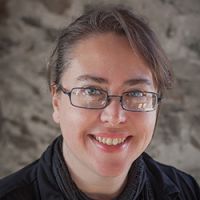Ensuring epoxy is fully cured and the long-term optical performance of the fiber optic connector is not compromised, depends greatly on selecting the correct curing equipment. The Fiber Optic Center consultation process for curing equipment selection is based on the specific type of epoxy being used and its associated curing requirements, whether it be heat- or UV-cure.
Long-term product reliability is largely about epoxy so we begin with developing and validating curing schedules regardless of it being a new bonding process or an existing production process that needs an audit and possible adjustments. Considerations include the anticipated environment the product will live in through it’s life-cycle, adherence to contractually-obligated industry standards, and your existing manufacturing and testing capabilities.
Adhesives used in fiber optic applications are applied in liquid form and then “cured” to solidify. 2-part epoxies (commonly used to bond fibers to ceramic or metal ferrules, as with Connector terminations) are typically heat-cured in a “curing oven”, whereas UV-cure adhesives (commonly used to bond fibers to glass substrates, as with PLC Splitter or WDM devices) are typically cured by exposure to UV light, often times followed by additional heat-curing.
Curing oven designs will vary to accommodate the variety of connector curing needs. Some oven-design variables to consider include top loading vs horizontal loading, fixed temperature vs ramped, UV-lamp wavelength and intensity, as well as other adhesive-specific needs. The Fiber Optic Center technical team partners with leading manufacturers including, Agiltron, Inc., Dymax, Domaille Engineering, Labnet and AccuCure, to provide unbiased selection consultation based on the material property needs.
Top loading vs horizontal loading
In top-loading ovens, the “oven” is a heated block with holes to load individual connectors in from the top. Curing connectors held vertically (with ferrule pointing downward), is ideal for most single-fiber connectors (SC, LC, etc.) because in this orientation, the epoxy within the connector ferrule will naturally flow downward—towards the base of the ferrule--- under gravity during the curing process, which is desirable.
However, top-loading ovens are not suitable for all connector types, specifically MT ferrules. MT ferrules are best cured horizontally, because the MT ferrule has a large, open “window” on the side: If cured vertically, the epoxy would flow out of the side of the ferrule during curing.
A reasonable compromise would be an oven in which the connectors can be loaded at slight angle above horizontal. This would allow for curing both single-fiber connectors (the epoxy would still tend to flow downward towards the base of the ferrule) and MTs (as long as the angle isn’t so large that epoxy flows out of the side window).
When using top-loading ovens for single-fiber curing, we need to insert the connector into a hole in the oven block. This increase the risk of the operator hitting the protruding, as-yet-uncleaved fiber against the oven block during loading, potentially breaking the fiber, and thus care must be taken. Ferrule Protection Tubes(sleeves inserted around the ferrule that cover and protect the protruding fiber) can be used to help mitigate this risk. However, using such sleeves adds some additional steps to the process and can present other potential issues such as contaminating the sides of the ferrule with epoxy. If we can avoid needing to use protection sleeves, this is preferred.
Side-loading ovens are suitable for use with all connector types, including MT.
Fixed Temperature vs Ramped
Most commercially-available curing ovens will have a temperature range up to 150 deg. C. Most heat-cure epoxy manufacturers present a range of “cure schedule” options for their epoxy. Depending on your product and needs, a lower-temperature cure may be suitable, whereas in other situations, a higher temperature cure is preferred. While the same epoxy manufacturer may recommend a variety of “suitable” cure schedules, a general rule of thumb is: the higher temp / time cure schedule usually results in a more complete, “higher quality” cure. When needing to cure at “high” temperatures (say, ~80 C and higher) thermal shock can be a concern, introducing stresses which can cause fiber core cracking in Multimode fibers. Core Cracking episodes are most often caused by curing at temperatures too high or using the wrong epoxy type for the application.
Ramping cure temps can help reduce the “shock” and give you the ability to use the most robust cure schedule recommendation, while mitigating risk to your product. In most typical Connector curing, a fixed-temperature cure is common and perfectly suitable. In cases where the connector will be in a more demanding environment (for example, in extreme temperature or pressure environments), a more complete / robust cure may be required.
UV-cure focused on wavelength and power
UV-cure adhesives require exposure to a particular UV wavelength, but can also cure with exposure to heat. It is very common to cure UV adhesives by first exposing to the proper UV light (to “tack” the fiber to the substrate). This is followed by an additional heat-cure to ensure that any areas of the product where UV light has risk of being blocked or shadowed from full exposure, are cured. There are UV light source factors to consider. It is critical that the wavelength and power of the UV lamp selected is a proper match for the material being used. These attributes will be defined by the adhesive manufacturer.
UV sources can be of the “flood” or “spot” variety when selecting lamps. The flood lamp being like a typical lamp, illuminates a fairly wide surface area. The spot lamps have a more directed beam that allow the light to be directed into a narrow beam.This allows the light to be directed more precisely, only onto specific areas of the product.
In all cases, UV exposure to eye and skin is a clear health concern and to be avoided, so proper shielding of the light and suitable protective equipment (UV glasses, clothing, etc.) is very important.
Fiber Optic Center’s epoxy technical team provides product selection assistance for the materials and the equipment.




